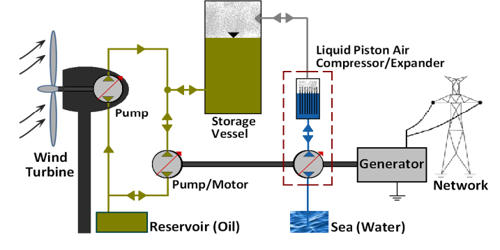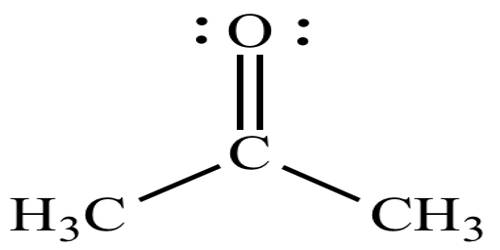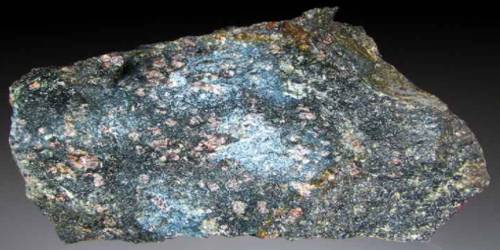An ionic liquid piston compressor, ionic compressor, or ionic liquid piston pump is a hydrogen compressor based on an ionic liquid piston instead of a metal piston as in a piston-metal diaphragm compressor. The model is developed based on the mass and energy balance of the hydrogen, and liquid bounded by the wall of the compression chamber. The basic principle is the replacement of the conventional metal piston with a specially designed, nearly incompressible ionic liquid. The ionic compression technology has been approved and is already in operation at several hydrogen fuelling stations around the world.
Principle
Linde has developed a device that they call an ‘‘ionic compressor’’. It is a machine for compressing gases at constant temperature and high pressure, using the ionic liquid as a type of liquid piston. An ionic liquid compressor takes advantage of two properties of ionic liquids—their virtually non-measurable vapor pressures and large temperature window for the liquid phase—in combination with the low solubility of some gasses (e.g. hydrogen) in them. The main reasons for the small temperature reduction are the large wall resistance and the small contact area at the interface. This insolubility is exploited by using the body of an ionic liquid to compress hydrogen up to 1000 bar (14,500 psi) in hydrogen filling stations. A suitable ionic liquid is selected as the most reliable replacement for the solid piston in the conventional reciprocating compressors. Linde’s ionic liquid compressor reduced the number of moving parts from about 500 in a conventional reciprocating compressor down to 8. Ionic liquids are room temperature salts which have very low vapor pressures.
Linde state that ‘‘in contrast to a conventional piston compressor, with some 500 moving parts, we now need only eight.’’ The system maintains a constant gas pressure of 250 bar while delivering 500 cubic meters of natural gas per hour. The proposed early applications are dihydrogen and natural gas filling stations.
Ionic compression technology leads the way to the next generation of hydrogen fuelling. Many seals and bearings were removed in the design as the ionic liquid does not mix with the gas. Service life is about 10 times longer than a regular reciprocating compressor with reduced maintenance during use, energy costs are reduced by as much as 20%. The heat exchangers that are used in a normal piston compressor are removed as the heat is removed in the cylinder itself where it is generated. It is a high-performance solution that has an approved design and is easy to operate. Almost 100% of the energy going into the process is being used with little energy wasted as reject heat. The gas is compressed in the cylinder by the up-and-down motion of the liquid column, similar to the reciprocating motion of an ordinary piston. Not to be confused with the ion pump or the ionic liquid ring pump.
















